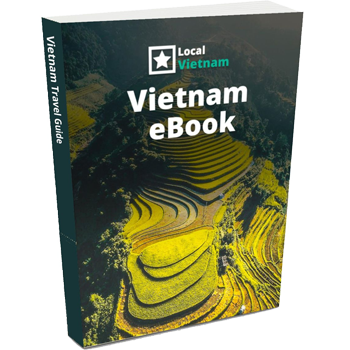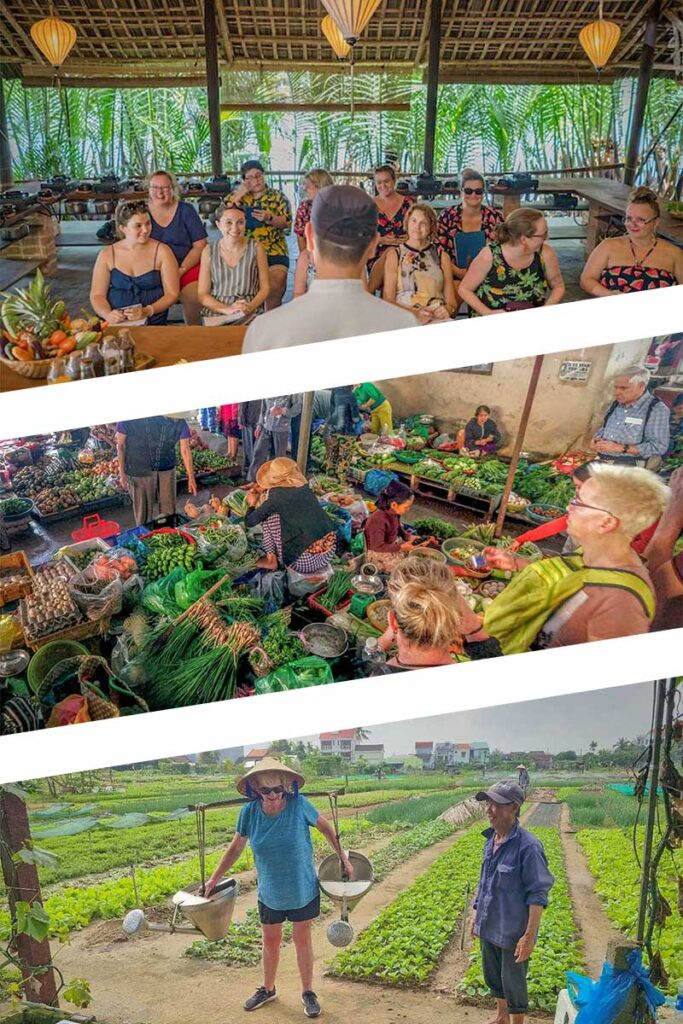What is Hoi An Central Market like?
Hoi An Central Market, also known simply as Hoi An Market, sits along the Thu Bon River at the eastern edge of the Ancient Town. For generations, it has been the town’s main trading hub—where locals come early for fresh ingredients, and where tourists later arrive to explore the colors, smells, and flavors of daily life.
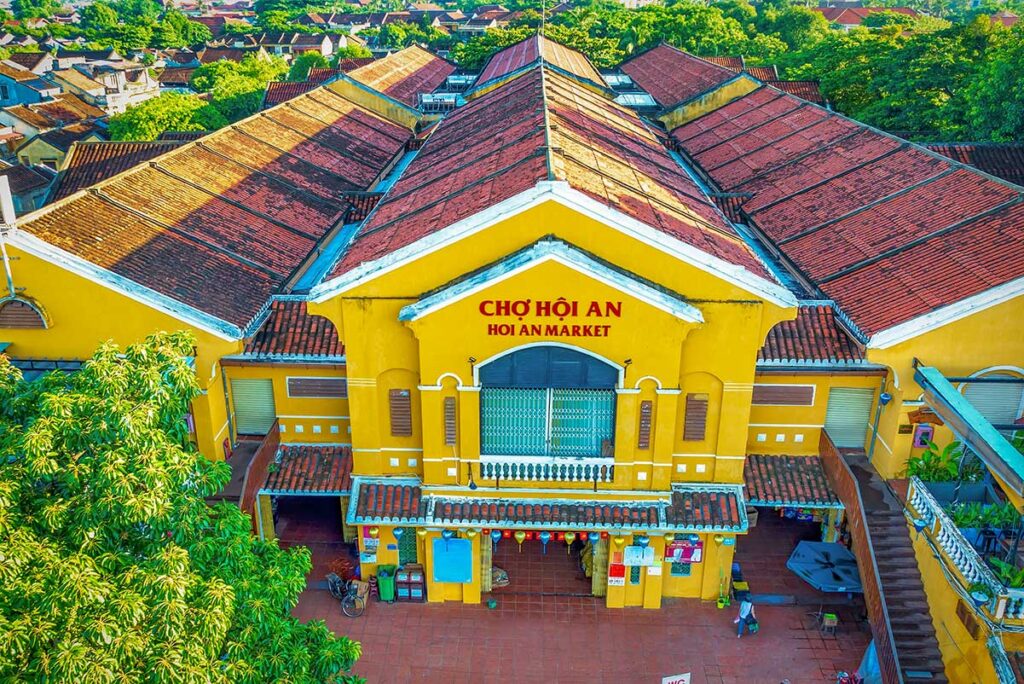
The market is a busy mix of activity from sunrise until early evening. Inside, you’ll find everything from steaming bowls of local noodles and grilled snacks to tables of spices, herbs, and dried goods. Outside, stalls overflow with tropical fruits, vegetables, fish, household items, and souvenirs like lanterns, hand-embroidered textiles, and wooden crafts. There’s also a tailoring section with fabric vendors offering budget-friendly clothing and simple custom pieces.
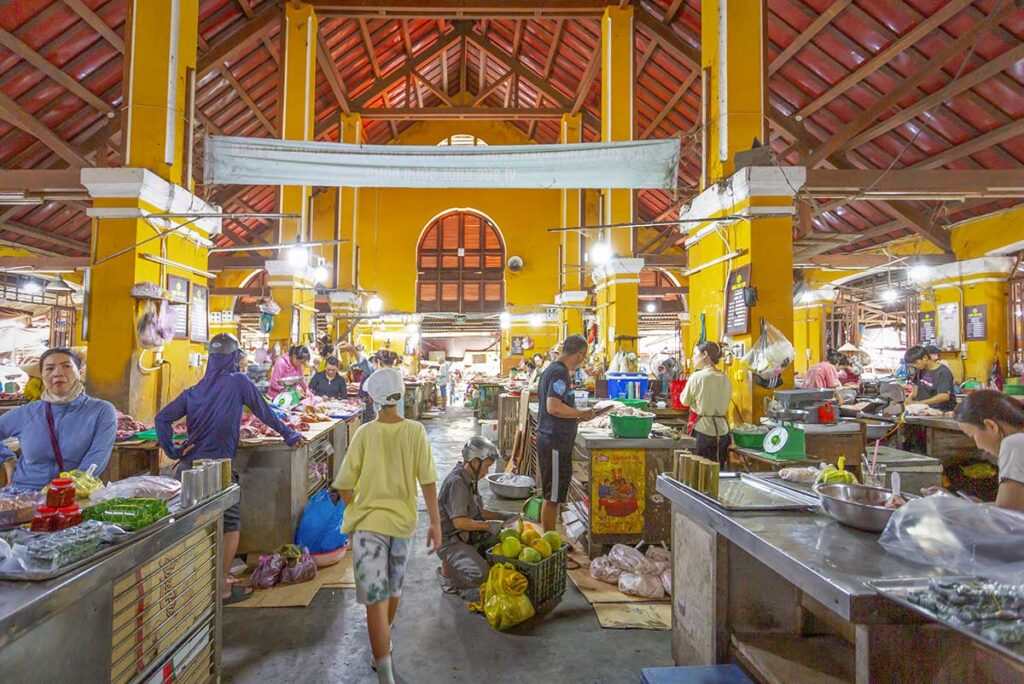
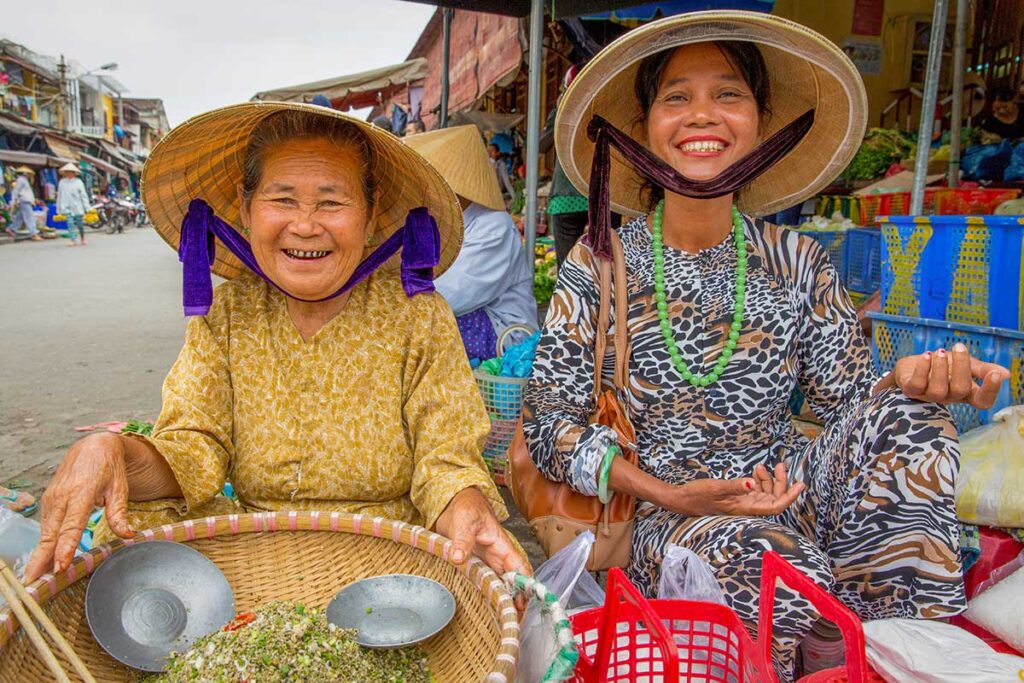
While much of the market still serves local needs, it has adapted over time—now equally catering to curious travelers. It’s chaotic but lively, sometimes overwhelming, but always worth a walk-through. In the next sections, we’ll dive deeper into its history, highlights, and how to make the most of your visit.
Hoi An Cooking Class – Learn Cooking from a Local Chef
- Experience: Cook authentic Vietnamese dishes with a local chef in a peaceful riverside kitchen.
- Includes: Market visit, vegetable garden stop, and hands-on cooking session with fresh local ingredients.
History Hoi An Central Market
Hoi An Central Market has deep roots in the town’s history as a major Southeast Asian trading port between the 15th and 19th centuries. Back then, Hoi An welcomed merchants from China, Japan, Europe, and beyond, and the market served as a vital meeting point for exchanging goods like spices, textiles, ceramics, and local produce.
Originally located where the Elephant Temple now stands on Le Loi Street, the market was later moved to its current riverside location for easier access to boats and traders coming in along the Thu Bon River. This site offered better connections to other markets, waterways, and the nearby islands.
During the French colonial era, the market was restored, but it suffered damage in later wars. It was eventually rebuilt in the early 2000s, keeping its traditional layout and role. Today, despite changes in appearance and more tourists passing through, it remains a working market at its core—still serving local families, vendors, and small restaurants across town.
Highlights of visiting Hoi An Central Market
Hoi An Central Market offers more than just shopping — it’s a full-on sensory experience. Whether you’re hungry for local food, hunting for authentic souvenirs, or just curious about daily life in Hoi An, there’s plenty to explore. Here are the main sections worth checking out.
1. Local food stalls (Food Court)
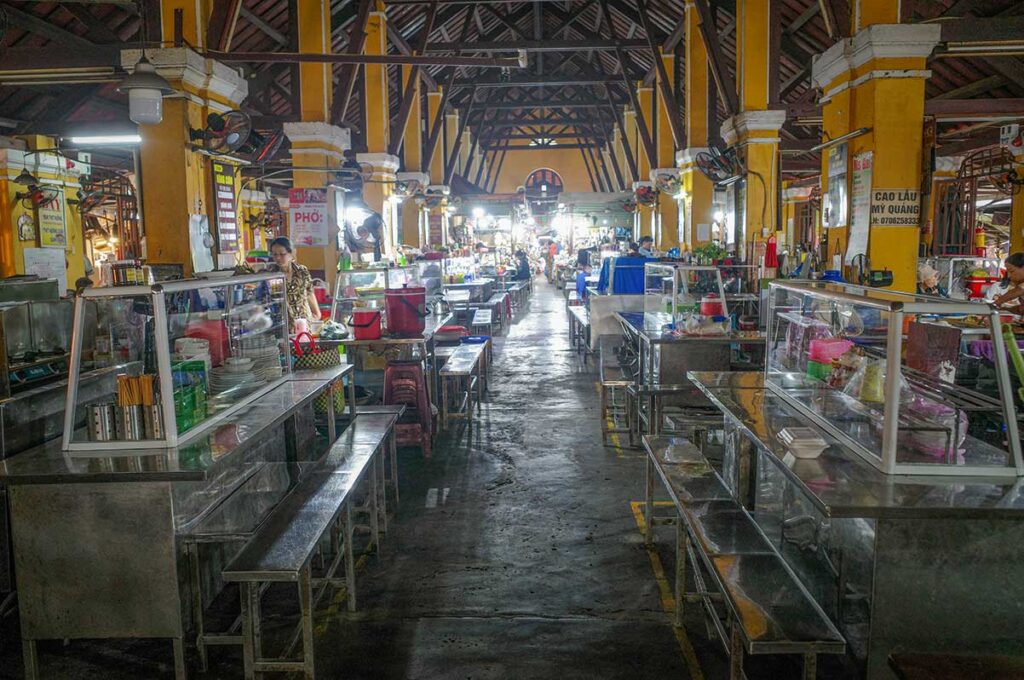
Right near the main entrance on Tran Phu Street, you’ll find rows of food stalls serving up Hoi An’s signature dishes. This is one of the easiest (and cheapest) places to try local specialties like Cao Lau, Mi Quang, White Rose Dumplings, and Banh Xeo. Prices usually range from 30,000 to 50,000 VND per dish, and English menus are often available.
Seating is casual—metal stools and shared tables—and the atmosphere is friendly, though it can get busy around lunchtime. Hygiene is generally decent for a local market, and many vendors are happy to serve small tasting portions if you want to sample more than one dish.
2. Fresh produce & herbs
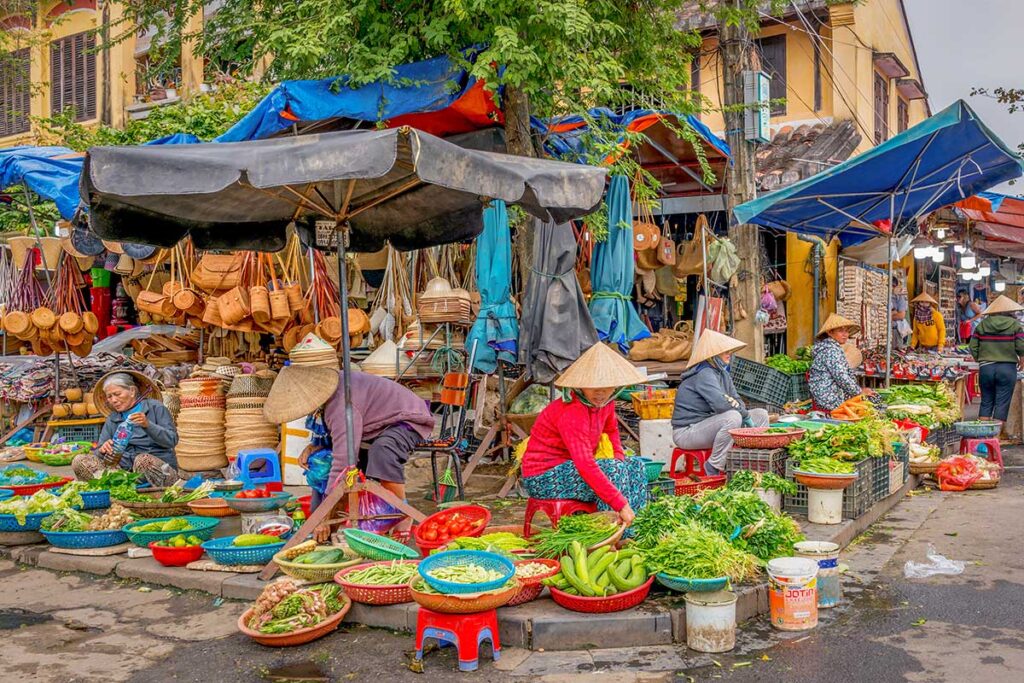
Outside the main building, especially in the morning, you’ll see rows of stalls selling fresh vegetables, tropical fruits, and local herbs. Expect to find everything from mangosteen and passion fruit to fragrant bundles of mint, lemongrass, and perilla leaves.

Even if you’re not buying, it’s a great area to wander through with a camera or simply take in the vibrant atmosphere. This section shows the more traditional, local side of the market.
3. Dry goods & spices

Inside the market, there are several stalls selling dried goods, local spices, coffee, tea, and cooking utensils. These make practical and packable souvenirs—especially Vietnamese cinnamon, star anise, or small packs of drip coffee.
Some vendors may offer samples or explain how to use unfamiliar spices. It’s a good stop if you enjoy cooking or want to bring home a small taste of Vietnam.
4. Souvenirs & handicrafts

Just outside the market hall, you’ll find vendors selling typical Hoi An souvenirs like lanterns, embroidered textiles, lacquerware, wooden chopsticks, and decorative fans. While some items can feel touristy, you’ll still find well-made pieces if you take time to browse.
Prices can vary, and bargaining is expected. If you’re looking for small, lightweight gifts to take home, this is one of the most convenient spots to find them.
5. Tailors & fabric section
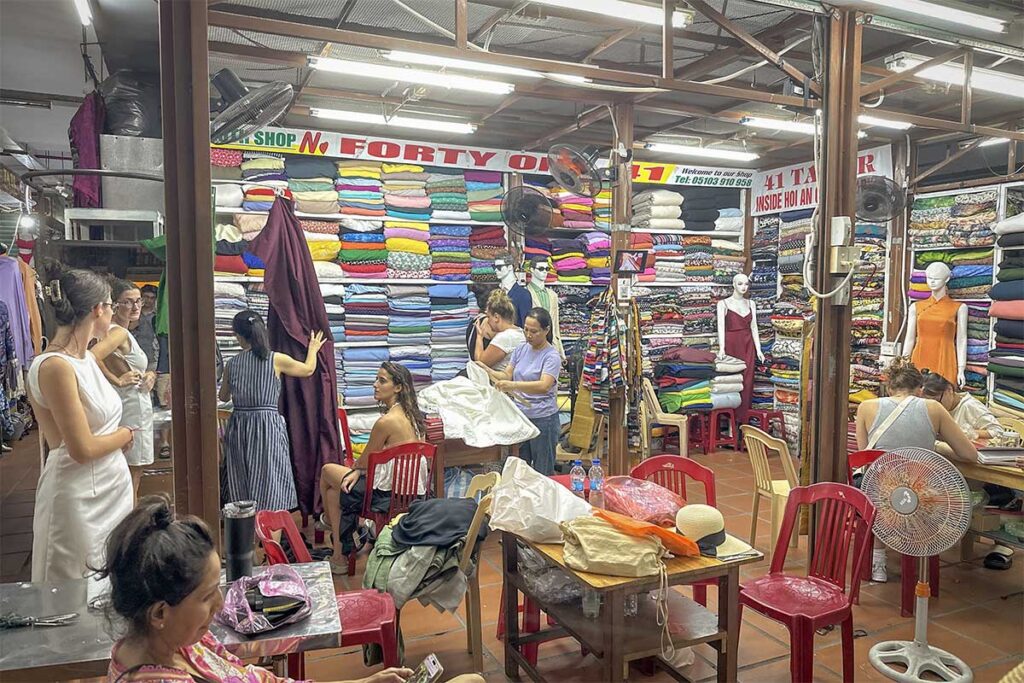
Toward the rear of the market or in connected side alleys, there are stalls offering fabric and budget tailoring services. The options are more limited than in larger tailor shops, but the prices are lower and turnaround can be fast—often within a day.
For better selection or more custom options, head to the nearby Hoi An Fabric Market, which is only a few minutes’ walk away.
6. Seafood, meat & wet market area
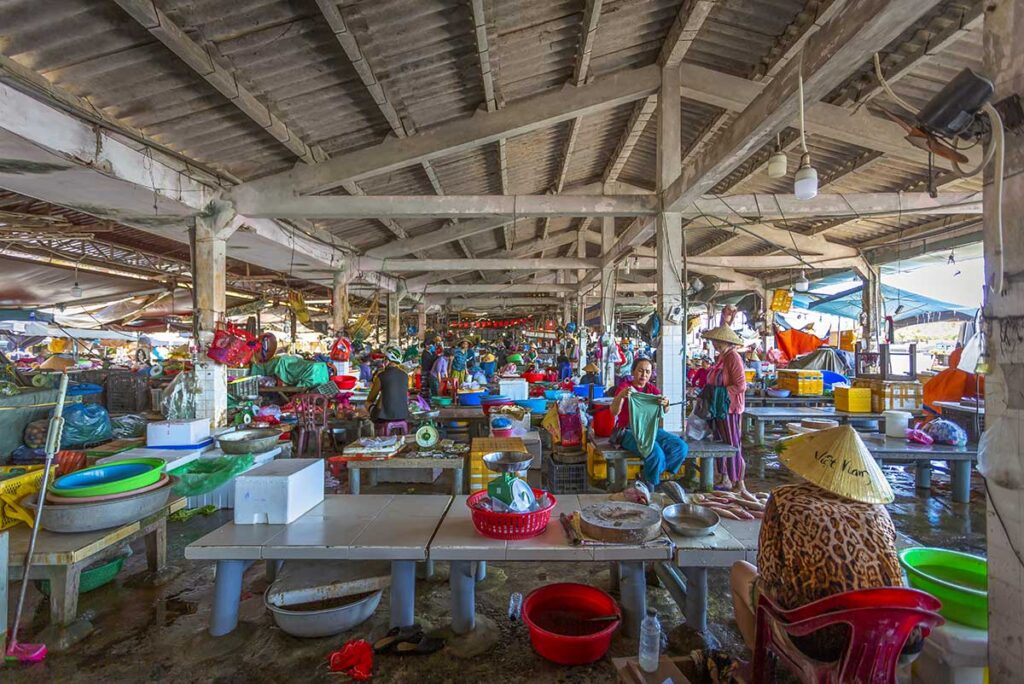
The wet market section is best visited in the early morning when fresh fish, meat, and seafood are delivered. It’s the busiest (and messiest) part of the market, and while fascinating to some, it may not be for everyone.
Expect strong smells, wet floors, and plenty of action—vendors chopping, scaling, and negotiating. If you’re interested in local food culture or photography, it’s worth a look. Otherwise, feel free to skip this area and focus on the rest of the market.
Visiting information
Location & address
Hoi An Central Market is located at 19 Tran Phu Street, right in the heart of Hoi An Ancient Town, along the banks of the Thu Bon River. It’s at the eastern edge of the Old Town, surrounded by key streets like Tran Quy Cap, Bach Dang, and Tieu La.
Opening hours
The market opens early in the morning and winds down around 6:00 PM.
- Best time to visit for a local feel: Between 6:00–9:00 AM, when fresh goods arrive and residents do their shopping.
- Busier with tourists: From late morning to late afternoon.
Some food stalls stay open a bit later, but most souvenir and produce vendors pack up before sunset.
How to get there
- Walk: If you’re staying in or near the Ancient Town, walking is the easiest option. From the Japanese Bridge, it’s a straight 10-minute stroll down Tran Phu Street.
- Bicycle: Many accommodations around Hoi An, especially in the countryside or An Bang beach area, offer free bikes. Cycling into town takes about 15–20 minutes and is a pleasant way to get around. Parking is available near the market (around 5,000–10,000 VND), usually along Bach Dang or side streets like Tieu La.
- Taxi/Grab: If you prefer not to bike or the weather’s bad, a short ride from the beach or outskirts of town costs around 50,000–70,000 VND. You’ll get dropped just outside the pedestrian zone—usually near Nguyen Hue or Hoang Dieu intersections—and walk the last few minutes.
- By Boat: The market is riverside, so it’s possible to arrive by boat, especially from nearby villages like Kim Bong or Thanh Ha. This is more scenic than practical, but we can help you arrange it if you’d like to add it to your visit.
What is nearby?
Hoi An Central Market is surrounded by many of the town’s most famous sights, since it’s right in the middle of Hoi An Ancient Town. Within a few minutes’ walk, you can visit the Japanese Bridge, several Chinese assembly halls, small museums, and traditional temples.
Just across the street is the Quan Cong Temple, and nearby you’ll also find the Rehahn Gallery and the Fujian Assembly Hall, all easy to include in a short walking route.
For a complete overview of things to see in the area, check out our full guide to Hoi An Ancient Town.
Visiting tips for Hoi An Central Market
Make the most of your visit with these practical, experience-based tips. The market can feel intense at times, but with the right approach, it’s one of the most rewarding spots in town to explore.
Go early for a local experience
The market is most authentic in the early morning, between 6:00 and 9:00 AM. You’ll see locals buying produce, fishermen unloading seafood, and the food court buzzing with breakfast orders—before the tour groups arrive.
Visit in the evening for a different vibe
While the main hall winds down by late afternoon, the streets around the market stay active. You’ll still find street food stalls, souvenir vendors, and a more relaxed pace compared to the night market. It’s not as lively as morning hours, but if you’re nearby, it’s worth strolling through for a bite or quick browse.
Not for the sensitive
Parts of the market—especially the meat and seafood sections—can be overwhelming. Expect strong smells, open cuts of meat, and wet floors. If that’s not your thing, feel free to skip those areas and stick to the food court or souvenir stalls.
Bargaining tips
Haggling is expected at souvenir and clothing stalls, especially those outside. Start by offering about half of the initial price, and negotiate politely. In the food court, prices are usually fixed and clearly listed—no need to bargain there.
Wear closed shoes
Some sections are slippery or messy, especially around the seafood and produce zones. Avoid flip-flops—closed shoes or sandals with grip are more practical.
Stay alert but relaxed
Some vendors can be persistent, especially in the tourist-focused areas. Don’t feel pressured—a polite “no thank you” and walking away is enough. Most sellers are used to it.
Visit the nearby Hoi An Fabric Market
Just a block away, the Hoi An Fabric Market offers a wider selection of cloth and a large number of tailors for custom-made clothes. If you’re interested in tailoring, it’s worth checking out both markets.
Read more in our guide to the best tailors in Hoi An
Often Iincluded in cooking classes
Hoi An Central Market is a common starting point for local cooking classes. If you’re joining one, your guide will usually walk you through the market, explaining unfamiliar ingredients, helping you practice bargaining, and pointing out local herbs, vegetables, and fruits you might not recognize. It’s a fun and educational way to experience the market, especially if you’re curious about Vietnamese cuisine.
Learn more in our guide to cooking classes in Hoi An
Is Hoi An Central Market worth visiting?
Yes, it’s definitely worth a visit. Even though it’s right in the middle of one of Vietnam’s most touristy areas, the market still feels surprisingly local—especially in the early morning when it’s full of real daily life.
It’s easy to combine with a walk through the Ancient Town, so even if you’re short on time, it’s worth a quick stroll. Just be aware: some parts, like the raw meat or seafood areas, might not be for everyone. It can also get crowded, and a few souvenir vendors may come across as a bit pushy—but a polite smile and moving on is all you need.
You’ll get the most out of it if you visit early or with a guide—like during a cooking class—so you can better understand the local produce and ingredients. Otherwise, treat it as a colorful and authentic slice of Hoi An life.

